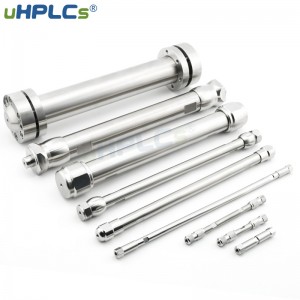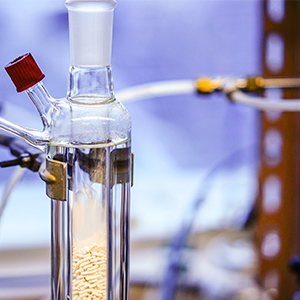HPLC and GC are separation techniques that have gained a firm foothold in the chemical laboratory. The basic purpose of these two techniques is to separate and quantify the components of organic mixtures.
Have you ever wondered why HPLC columns are shorter and wider than GC columns? Before you answer this question, you should understand the benefits of column length.
I. Column length.
As the length of a liquid chromatography column increases, the interaction time between the eluting compounds and the stationary phase increases, resulting in improved column efficiency and separation. This leads to well-separated peaks. However, the practical problems faced due to increased column head pressure and analysis time preclude an unlimited increase in column length.
The size requirements of an HPLC column depend on the separation objective. Typical analytical applications require a column length of 15 – 25 cm with an internal diameter of 4.6 mm. HPLC columns are available in 2.1, 3.0, 4.0, 4.6, and 7.8 internal diameters and lengths ranging from 20 – 250 mm.
If the high-efficiency analysis is sought, this series of USHA columns is perfect for you. It offers increased speed and resolution. Available in 70- 300 Å pore size, 1.8, 2, 3, 5, and 10 particle size packing. Also available in many different stationary phases (C18, C8, phenyl, C4, C3, C1, cyano [CN], PFP, F-C8, and C30), these columns are recommended for small molecule reversed phase separations and are very durable columns for liquid phase analysis.
Preparation columns are available in a wider diameter range of 20 – 50 mm. Henderson preparation columns range from 10 – 50 ID and 20 – 250 mm in length, covering a wide range of commonly used sizes. Even if longer column tubes are needed, HSPS can provide custom-made columns.
II. Gas Chromatography Columns.
Gas chromatography columns are divided into packed columns and capillary columns. Filled columns are usually about 1.5 m or 6ft long with 1/8″ or 3.2mm outer diameter. On the other hand, capillary columns are several meters long (10-100m). Filled columns are made of glass or stainless steel, while capillary columns are made of fused silica hoses. The flexible tube accommodates the long column as a circular coil in the column temperature chamber. The differences between the two techniques in the separation process are now examined to arrive at logical answers to basic questions about the differences in length between GC and HPLC columns.
III. Mobile phase.
The nature of the mobile phase: The primary reason for this is the nature of the carrier liquid known as the mobile phase. HPLC uses a liquid as a carrier for the sample through the column, while in GC, a gas stream is used to carry the sample. Liquids have a higher viscosity than gases and therefore encounter more resistance when passing through the column. The longer the column, the greater the flow resistance of the mobile phase, so HPLC requires shorter column lengths. HPLC Miniaturized Liquid Chromatography Column Empty Tube Assembly 10X20mm is specially developed for customers who need shorter column lengths. The dead volume is small, the inner wall of the tube is smooth, and the cross-section is uniformly rounded, ensuring the high performance of the finished column.
IV. Samples.
Sample volatility – the sample injected into the HPLC is a liquid, while in GC, it can be a liquid or a gas. However, before entering the GC column: the liquid is converted to vapor due to the high temperature in the injector module. Gases encounter less resistance in the GC column, allowing longer column lengths to be used.
V. Stability.
Sample Stability: Samples analyzed by HPLC are typically thermally unstable, so they are in the liquid phase in the HPLC column at room temperature. On the other hand, the samples entering the GC column are gases with lower molecular weights and boiling points. Such compounds can easily evaporate and be retained in gaseous form during passage through the column.
Further reduction of the column length, especially in new UHPLC applications, leads to faster analysis and increased sensitivity. The future trend in analytical applications will inevitably be to reduce HPLC column lengths and analysis times from minutes to seconds.
Post time: Aug-27-2022








